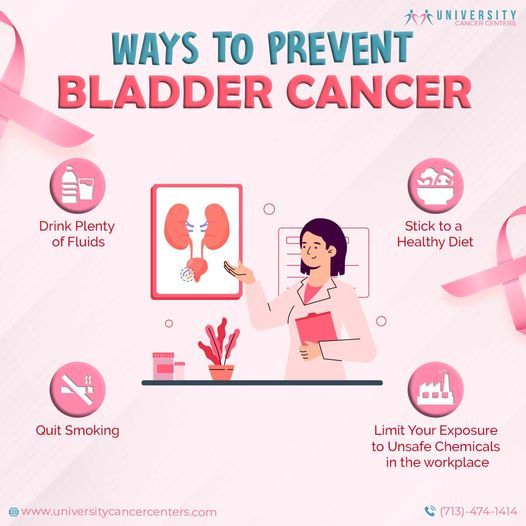#PelvicFloorExercises
Explore tagged Tumblr posts
Text

According to 2016 U.S. data bladder cancer mostly affects older people. About 90% of people with bladder cancer are older than 55. The average age people are diagnosed with bladder cancer is 73.
#endometriosis#endometriose#overactivebladder#bladderproblems#bladder#chronicillness#chronischziek#chronicpain#painproblems#1in10#pelvicfloorexercises#diastasisrecti#pelvicfloorphysio#bladderhealth#coreworkouts#universitycancercenter#bladdercancer
4 notes
·
View notes
Text

Lifestyle Changes to Help Alleviate Symptoms of an Enlarged Prostate
Several lifestyle adjustments can help manage and reduce symptoms of benign prostatic hyperplasia (BPH):
Exercise Regularly: Physical activity helps reduce inflammation, manage weight, and improve overall prostate health. Aim for at least 30 minutes of moderate exercise, such as walking or swimming, most days of the week.
Maintain a Healthy Weight: Excess weight can worsen BPH symptoms. Losing weight through diet and exercise can provide relief.
Adopt a Balanced Diet: Focus on fruits, vegetables, whole grains, nuts, seeds, and lean proteins. Reduce intake of red meat, processed foods, and saturated fats.
Limit Caffeine and Alcohol: These can irritate the bladder and increase urinary frequency. Reducing or avoiding them may help.
Manage Fluid Intake: Drink fluids throughout the day but limit them in the evening to reduce nighttime urination. Avoid drinking large amounts at once.
Practice Good Bathroom Habits: Take your time when urinating, fully empty your bladder, and avoid holding urine for long periods. Double voiding (trying to urinate again after finishing) can help87.
Manage Stress: Stress can worsen symptoms. Techniques such as deep breathing, meditation, or yoga can help manage stress levels.
Try Kegel Exercises: These pelvic floor exercises can strengthen muscles and improve bladder contro.
Monitor Medications: Some medications can aggravate BPH symptoms. Consult your doctor about your current medications8.
Regular Check-Ups: See your healthcare provider regularly for monitoring and personalized advice.
Making these changes can significantly improve quality of life and help manage BPH symptoms effectively.
#EnlargedProstate#BPHManagement#MensHealth#HealthyLifestyle#ProstateCare#ExerciseForHealth#BalancedDiet#BladderHealth#StressManagement#PelvicFloorExercises#healthcare#malehealth
0 notes
Link
Erectile Dysfunction (ED) is the inability to achieve or maintain a firm erection suitable for sexual intercourse. It can be caused by a variety of factors, including poor blood flow to the penis, stress, anxiety, hormonal imbalances, and certain health conditions like diabetes and heart disease. These issues can lead to bad sexual performance and reduced confidence. Exercises that target the pelvic floor, core, and cardiovascular system are particularly effective for improving penile blood flow, leading to stronger, longer-lasting erections. Strengthening the pelvic floor muscles through Kegels and related exercises enhances control over erections while improving overall circulation through cardio and lower body exercises helps maintain a healthy blood supply to the penis. The benefits of these exercises include enhanced sexual performance, improved stamina, and better overall health, making them ideal for men seeking natural ways to combat ED and achieve rock-hard erections.
1 note
·
View note
Text
Have you heard of the 4th trimester? This is the time to bring back awareness to your core, breath, and pelvic floor therapy all while bonding with your baby.
We teach you how to rehab in this new phase of life when you just can’t take 30 minutes out of your day to exercise. We take care of your WHOLE body, not just your pelvic floor.
Here are some examples of our phase I Postpartum rehabilitation program to get you back to ✨Self Care✨
#physicaltherapy#pelvicfloorexercises#pelvicfloor#pelvicfloorphysicaltherapy#mommyandme#momlife#momlifebelike#rehab#babyexercise#exercisewithbaby
0 notes
Video
Best Premature Ejaculation Treatment Exercises - Dr. Monga Clinic
#youtube#PrematureEjaculationExercises#CurePE#PelvicFloorExercises#EjaculationTreatment#PECauses#PEsolutions#Drmongamediclinic
1 note
·
View note
Text
Premature Ejaculation 5 Helpful Tips

Premature Ejaculation 5 Helpful Tricks for Your Love Life
Which man doesn't know it? You're just getting into the swing of things, but you couldn't stop yourself... You've already heated things up during foreplay, and now that you're about to get started and want to pounce on each other like animals, you realize after not even 30 seconds that you might come too quickly again. But why again? You consciously focused on your partner this time, approached the whole thing very gently. Anyone affected by premature ejaculation knows this feeling. Premature ejaculation is a very unpleasant experience for every man. Experiencing premature ejaculation once can make you lose your sexual desire and confidence once and for all. Most men are afraid of finding themselves in a similar situation again.

Premature Ejaculation Home Remedies The reasons for premature ejaculation are barely researched. So far, there are only speculations: Some experts imagine that biological factors such as an oversensitive penis or changes in the interaction of hormones and nerves are the cause. Some of them lie in psychological factors such as relationship problems or insecurities. Biological and psychological factors can also be responsible together and influence each other. Some men have been dealing with premature ejaculation since the beginning of their sexual lives. For others, they only occur later in life; then they are referred to as "acquired" premature ejaculations. About 4% of the men worldwirde experience regular premature ejaculation during sex. Premature ejaculation is a well-known and widespread problem for many men. Men affected by this problem often feel very ashamed in front of their partner and just as often feel unmanly. This also results in these men putting a tremendous amount of pressure on themselves and, in not uncommon cases, even completely losing interest in sex. But The good news: Coming too early during sex is not a fate you have to live with. However, you should first come to terms with the fact that something is not going as you imagine it. Then causes need to be found, and in the next step, you can start working on your sexual stamina. Sounds complicated? It's not! We'll show you how to better control your ejaculation. When do you actually speak of "coming too early"? When is coming early actually "too early"? How long should it take between the first penetration into your partner and ejaculation, so that it is not understood as premature ejaculation? According to the definition in medicine, a man has "come too early" if he has ejaculated within a period of about one minute after penetrating his partner. However, this definition does not take into account several factors. - How long did foreplay last? - How aroused was he before penetration? - How long have the two known each other? Ultimately, one can only speak of a problem or a "sexual disorder" if: - It is a recurring "problem." - The man or even the relationship suffers from it. But before we get to our premature ejaculation home remedies, here's a very important tip for preventing premature ejaculation. Talk to each other! It doesn't mean that there's something wrong with you just because you come "too early." Work together and "train" and experiment :-) And in the meantime, there are still some ways you can bring your partner to orgasm in one way or another. It's very important to have fun with it.

Premature Ejaculation Home Remedies Trick Number 1 — Pelvic Floor Training Pelvic floor training is not only a great way for women to increase the quality and intensity of their orgasms. It can also be a great home remedy for men to delay premature ejaculation. Through this training, you gain more control over the tension and relaxation as well as your sensations during sex. Premature Ejaculation Home Remedies Trick Number 2 — Use Your Hips Too Instead of just going through the "in-out" motion during sex, "work" with your pelvis. Circle your pelvis and try something new, you and your partner will surely feel new sensations that you both enjoy. While you "work" with your hips, keep the rest of your body still. This way, you can control your heart rate and won't get aroused as quickly. Premature Ejaculation Home Remedies Trick Number 3 — Use Numbing Condoms Perhaps try condoms that have a slight numbing effect on your member. There are some good reviews for these condoms. One example would be these condoms from Billy Boy. Premature Ejaculation Home Remedies Trick Number 4 — The Start-Stop Method In the so-called "start-stop method," the penis is stimulated during sex until you are on the verge of ejaculation. You probably know this point as the "point of no return." With this method, the act is stopped just before reaching this point, and you wait until your arousal subsides. In the meantime, you can also continue to arouse your partner with your hands or tongue. This method can also be used during masturbation to delay ejaculation. With this method, the man can perceive his arousal better over time and thus better control his ejaculation. Premature Ejaculation Home Remedies Trick Number 5 — Deep and Conscious Breathing Through conscious belly breathing, you can relax yourself and your muscles. A clear advantage is that through deep breathing, you can experience the moment much better, which means you can perceive your body much better and better gauge the point of no return. This will help you with methods such as the start-stop method or other methods such as the squeeze method.

How to Stop Premature Ejaculation If you're wondering how to stop premature ejaculation, there are several techniques and approaches you can try. From pelvic floor exercises to behavioral techniques like the start-stop method, there are methods that can help you gain better control over your ejaculation timing. It's essential to explore these options and find what works best for you and your partner. Pelvic Floor Exercises (Kegels): Strengthening your pelvic floor muscles can help improve your ejaculatory control. Kegel exercises involve contracting and relaxing the muscles that support your pelvic organs. To perform Kegels, identify your pelvic floor muscles by stopping the flow of urine midstream. Once you've located these muscles, contract them for a few seconds, then release. Aim to do several sets of Kegels daily, gradually increasing the duration of each contraction. Behavioral Techniques: Start-Stop Method: During sexual activity, practice the start-stop method by stimulating your penis until you're about to ejaculate, then pause or stop altogether until the urge subsides. Resume sexual activity and repeat as needed. This technique can help you identify your arousal levels and delay ejaculation. Squeeze Technique: Similar to the start-stop method, the squeeze technique involves stimulating your penis until you're close to ejaculation, then having your partner gently squeeze the base of your penis for several seconds. This helps reduce arousal and delay ejaculation. Edging: Edging involves intentionally bringing yourself to the brink of orgasm repeatedly without ejaculating. By practicing edging during masturbation or sexual activity, you can learn to recognize and control your arousal levels, ultimately improving ejaculatory control. Behavioral Therapy: Cognitive-behavioral therapy (CBT) or sex therapy can help address psychological factors contributing to premature ejaculation, such as performance anxiety or relationship issues. A therapist can provide coping strategies, relaxation techniques, and communication skills to enhance sexual satisfaction and confidence. Medications: In some cases, medications such as selective serotonin reuptake inhibitors (SSRIs) or topical anesthetics may be prescribed to delay ejaculation. SSRIs, typically used to treat depression and anxiety, have been found to have a side effect of delaying ejaculation. Topical anesthetics, applied to the penis, can reduce sensitivity and prolong sexual activity. Lifestyle Changes: Making certain lifestyle adjustments can also help manage premature ejaculation. These may include reducing stress, practicing relaxation techniques such as mindfulness or deep breathing exercises, maintaining a healthy diet and exercise routine, and avoiding excessive alcohol or drug use. Communication with Your Partner: Open communication with your partner is key to overcoming premature ejaculation. Discussing your concerns, preferences, and desires can reduce performance pressure and improve intimacy. Experimenting with different sexual activities, positions, and techniques together can also enhance your sexual experiences. What Causes Premature Ejaculation Understanding what causes premature ejaculation is crucial for finding effective solutions. While the exact causes can vary from person to person, factors such as psychological issues, relationship problems, and biological factors like hypersensitivity or hormonal imbalances can contribute to premature ejaculation. By identifying and addressing these underlying causes, you can better manage and overcome premature ejaculation.

Psychological Factors: Stress, anxiety, depression, and performance pressure can all play significant roles in premature ejaculation. For example, performance anxiety related to fears of inadequacy or past negative sexual experiences may contribute to ejaculatory issues. Additionally, psychological conditions such as obsessive-compulsive disorder (OCD) or post-traumatic stress disorder (PTSD) can impact sexual function. Relationship Issues: Poor communication, unresolved conflicts, lack of emotional intimacy, or sexual dissatisfaction within a relationship can lead to premature ejaculation. Addressing relationship dynamics, improving communication skills, and seeking couples therapy may help alleviate these issues. Biological Factors: Various biological factors can contribute to premature ejaculation, including: Hypersensitivity: Some men may have an overly sensitive penis, leading to heightened arousal and quicker ejaculation. Hormonal Imbalances: Imbalances in hormone levels, particularly serotonin, dopamine, and testosterone, can affect ejaculatory control. Neurological Factors: Conditions affecting the nervous system, such as multiple sclerosis (MS) or nerve damage from injury or surgery, may disrupt signals between the brain and genitalia, leading to premature ejaculation. Genetic Predisposition: There may be a genetic component to premature ejaculation, with certain individuals predisposed to ejaculatory issues. Medical Conditions: Certain medical conditions, such as prostate problems, thyroid disorders, or urinary tract infections, can contribute to premature ejaculation. Treating underlying medical issues may help improve ejaculatory function. Lifestyle Factors: Lifestyle choices such as excessive alcohol consumption, smoking, drug use, or poor dietary habits may impact sexual function and contribute to premature ejaculation. Adopting a healthier lifestyle through regular exercise, balanced nutrition, and stress management techniques can support overall sexual health. How to Cure Premature Ejaculation While there's no one-size-fits-all cure for premature ejaculation, there are various treatments and strategies that can help you manage and reduce its impact on your sex life. From therapy and counseling to medications and lifestyle changes, there are options available depending on the severity of your condition. It's essential to consult with a healthcare professional to determine the most suitable treatment plan for you. Home Remedy for Premature Ejaculation In addition to medical treatments, there are also natural home remedies that may help alleviate premature ejaculation symptoms. Techniques such as deep breathing exercises, pelvic floor exercises, and herbal supplements have been reported to have positive effects for some individuals. However, it's essential to approach these remedies with caution and consult with a healthcare provider before trying them. Do you have any other home remedies that can help to not come too early? Feel free to write them in the comments. Read the full article
#behavioraltherapy#biologicalfactors#causesprematureejaculation#communication#cureprematureejaculation#geneticpredisposition#homeremedies#hormonalimbalances#hypersensitivity#lifestylechanges#lifestylefactors#medicalconditions#medications#neurologicalfactors#pelvicfloorexercises#prematureejaculation#psychologicalfactors#relationshipissues#squeezetechnique#start-stopmethod#stopprematureejaculation
0 notes
Text

We are aging!
My MIL is on her deathbed in my dining room. She is 82 and for the past 6 decades, she lived in survival mode in rural Montana: self-sufficient, isolated, unwilling to get help for her mental and physical struggles. She was skin and bones when she came to us in the final stages of Alzheimer’s and Parkinson’s which she’d hidden from us.
Aging doesn’t have to be like that. And you and me? We are aging!
Patrice Hazan, physical therapist and founder of GroupHab, joins us for this episode that will enlighten our listeners with ways to age gracefully. We can do a lot – biologically, sociologically, and psychologically – to keep our bodies feeling and functioning younger ways. Listen now to find out how!
#diastasisrecti#fit2b#homeworkoutvideos#pelvicfloorexercises#cardioworkouts#weightworkout#pilatesworkouts#yogaworkouts#mommyworkouts#abrehab#spoonie#familyfriendly#mentalfitness#diastasisworkouts#kettlebell#instagramfitness#dementiaawareness#caregivingtips
0 notes
Text

One prevalent form of cancer that starts in the bladder's cells is bladder cancer.
According to The American Cancer Society's estimates for bladder cancer in the United States for 2023 are: About 82,290 new cases of bladder cancer (about 62,420 in men and 19,870 in women) About 16,710 deaths from bladder cancer (about 12,160 in men and 4,550 in women)
#endometriosis#endometriose#overactivebladder#bladderproblems#chronischziek#chronicpain#painproblems#universitycancercenter#bladdercancer#coretraining#coreworkouts#bladderhealth#pelvicfloorphysio#diastasisrecti#pelvicfloorexercises
3 notes
·
View notes
Text
exercises.
With a giggle and grin, we begin to unfold, The tale of these muscles, so vital, so bold. They're hidden from view, a mysterious lot, But controlling them well is a skill you've got.
In this sport of the pelvis, where dignity's waived, You'll find that the laughter is easily saved. For when you start squeezing, and clenching with glee, You'll realize it's not as simple as can be.
A pelvic floor exercise, a humorous sport, Makes you wonder if laughter's what it's meant for. But these muscles, they matter, for more than a joke, They help you stay dry when you're out for a soak.
They aid in your balance, your strength, and your grace, In the sport of life's race, they set the right pace. So don't be embarrassed, embrace with a grin, Pelvic floor exercises, let the games begin!
With a chuckle and wink, we conclude with delight, In the world of fitness, it's quite a sight. To control what comes out, from the bottom down low, With pelvic floor prowess, you'll steal the show!
Alter vor Schönheit, halten, halten, halten. Und locker lassen. Und nochmal. Halten, halten, halten...
Schreibt's in die Kommis nei, wia's klappt.
1 note
·
View note
Text
Pelvic Medical Devices: Personalized Treatment Approaches
youtube
Pelvic medical devices have revolutionized the treatment landscape for various pelvic floor disorders, offering personalized approaches tailored to individual patients’ needs. References: https://pelvitech.wordpress.com/2024/02/21/pelvic-medical-devices-personalized-treatment-approaches/ https://pelvictech.com/blogs/news
#pelvic floor device#pelvic tech#medical health devices#pelvic floor exercise#medical devices#best kegel devices#medicaldevices#pelvictech#pelvicfloorexercise#Youtube
2 notes
·
View notes
Text
Safe & Effective Pregnancy Exercise Tips 💪🤰
Safe & Effective Pregnancy Exercise Tips 💪🤰
Image idea: A pregnant woman doing light prenatal yoga or walking outdoors, looking relaxed and happy.
Post Description:
Staying active during pregnancy can help reduce discomfort, improve mood, and prepare your body for labor. Here are some safe and effective exercise tips for expecting mamas:
Prenatal Yoga: Gentle stretches and poses can improve flexibility, relieve back pain, and reduce stress.
Walking: A simple walk around the block is great for boosting circulation and staying active without overdoing it.
Pelvic Tilts: Strengthen your core and ease lower back pain with this easy and effective exercise.
Swimming: Water exercise is gentle on your joints and can help reduce swelling, all while giving you a full-body workout.
Strength Training (with light weights): Light strength exercises can help maintain muscle tone without straining your body.
Kegel Exercises: Strengthen your pelvic floor muscles in preparation for labor and recovery post-birth.
Stay Hydrated: Drink plenty of water before, during, and after exercise to stay hydrated and prevent overheating.
Always check with your healthcare provider before starting any new exercise routine. Listen to your body and enjoy moving in ways that feel good for you!
#PregnancyExercise#PrenatalYoga#PregnancyFitness#ActivePregnancy#ExerciseDuringPregnancy#PregnancyWellness#HealthyPregnancy#PrenatalCare#MomsToBe#PelvicFloorExercise#PregnancyMovement#ActiveMama#PregnancyStrength#SafeExercise#PregnancyTips#PrenatalStrength#WaterExercise#ExpectingMoms#PregnancyJourney
0 notes
Note
pelvicfloorexercises nearly made me cry good lord 😭😭
BUT YEAH MIRA LOCK IN!! MR. PANDICULATION WILL BE HERE WHEN YOU’RE DONE 😎
I FINALLY EMERGED VICTORIOUS ON THE OTHER SIDE!! apollo it was torturous but we made it 🤩 now to spam the dash with pacemaker posting for the next twenty four hours until i lock back in to write the last part of that mydei fic (and then i’ll be like the tumblr writer version of unemployed and you all will NEVER know peace)
3 notes
·
View notes
Text
youtube
German Hidden Exercises! Do This Every Morning | Kegel Exercise for Men To Increase Dragon Size Welcome to our channel! 🌟 In this video, we reveal a series of powerful German hidden exercises that you should do every morning to transform your health and boost your strength. Specifically designed for men, these Kegel exercises will help you increase your dragon size, improve your pelvic floor strength, and enhance overall performance. Why Kegel Exercises? Kegel exercises are not just for women; they are incredibly beneficial for men too. These exercises target the pelvic floor muscles, which play a crucial role in urinary control, sexual function, and core stability. Regular practice can lead to increased size, improved endurance, and better overall health. ⏱️TIMESTAMP⏱️ 00:00 Child Pose 00:25 Shin Box Switch 01:15 Table Top Bridge 01:40 Push-Up in Child Pose 02:05 One Leg Bridge R 02:30 One Leg Bridge What You'll Learn: The science behind Kegel exercises and their benefits for men Step-by-step instructions on performing German hidden exercises Tips on incorporating these exercises into your daily morning routine How consistent practice can lead to noticeable improvements in your dragon size and power Benefits of Morning Kegel Exercises: Strengthen pelvic floor muscles Enhance sexual performance and stamina Improve urinary control and prostate health Increase confidence and overall well-being Follow Along: Join us as we guide you through each exercise with clear, easy-to-follow instructions. Make these exercises a part of your morning routine and experience the benefits firsthand. Don't Forget to Subscribe! If you enjoyed this video and found it helpful, please like, comment, and subscribe to our channel for more health and fitness tips. Hit the bell icon to stay updated with our latest videos. Share Your Progress: We love hearing from you! Share your progress and experiences in the comments below. Have any questions or suggestions? Drop them in the comments, and we’ll get back to you. Stay Connected: Follow us on social media for more tips, updates, and exclusive content! Related Videos: Kegel Exercises for Men | Boost Your Performance Morning Stretch Routine | Full Body Flexibility Top 10 Exercises to Increase Stamina 💪🏼 ⏩ https://www.youtube.com/watch?v=q1W7gaBjpP4 💪🏼 ⏩ https://www.youtube.com/watch?v=WcJA-C7q5DI 💪🏼 ⏩ https://www.youtube.com/watch?v=hlJD7WDqxB8 💪🏼 ⏩ https://www.youtube.com/watch?v=pJMkS2iROu8 kegel inches in max 10 days increase dragon size workout increase dragon increase dragon size with picture increase dragon exercise increase strengthening exercises during pregnancy pelvic floor strengthening exercises for males pelvic floor strengthening exercises for men pelvic floor strengthening workout pelvic floor strengthening device pelvic floor strengthening exercises for pregnant women pelvic floor strengthening frequency pelvic floor strengthening yoga poses pelvic floor strengthening yoga pelvic floor strengthening men pelvic floor strengthening postpartum #KegelExercises #MenHealth #IncreaseDragonSize #PelvicFloorStrength #BoostDragonPower #FitnessForMen #healthyliving #yoga #stretching #warmup #workoutfromhome #KegelExercisesForMen #MensFitness #PelvicHealth #MaleFitness #StrengthTraining #MensWellness #ImprovePerformance #StrongerTogether #HealthyLifestyle #BoostEndurance #fitnessgoals #KegelExercises #PelvicFloorHealth #PelvicFloorExercises #CoreStrength #FitnessTips #HealthAndWellness #KegelWorkout #ExerciseRoutine #StrongCore #WellnessJourney #FitLifestyle #BodyMindConnection #GermanHiddenExercises #KegelExercisesForMen #IncreaseDragonSize #MorningWorkout #PelvicFloorStrength #MenHealth #FitnessRoutine #BoostPerformance
#health & fitness#kegelexercises#BoostEndurance#men health#workout#fitness#increase#pelvic floor therapy#pelvic pain#Youtube
7 notes
·
View notes
Text

Call for Abstract! Interested authors should submit their abstract at the 16th World Digestive And liver Diseases Conference, which will take place in December 17-19, 2025, in Dubai, UAE & Virtual. We invite you to share your abstract and for more details, please contact us. Submit here: https://digestive-liverdiseases.utilitarianconferences.com/submit-abstract WhatsApp Us: https://wa.me/+971551792927 #incontinence #pelvicfloor #womenshealth #pelvichealth #urinaryincontinence #pelvicfloorexercises #postpartum #incontinenceawareness #prolapse #menopause #kegels #stressincontinence #health #pelvicfloorhealth #pelvicpain #pregnancy
0 notes
Text

Strengthen Your Core in Bed: Tips & Exercises for Moms on Bedrest
Being on bedrest when you’re expecting a baby or recovering from an injury or surgery can be tough on your mental health, heart health, bone density, and fitness. Not only are you dealing with the physical and emotional changes of whatever situation you’re in, but you also have to find ways to avoid joint stiffness, muscle wasting, anxiety, depression, bone loss, lower stamina, and less bladder control – all things that are common results of being on bedrest – all while confined to your bed! Fortunately, there are plenty of ways to safely exercise that can help strengthen your core without getting out of bed.
Here on Fit2B we have lots of tips and exercises for expectant moms, recovering athletes and anyone who needs to stay in their beds for a while, and we’ve linked to our best ones below!
https://fit2b.us/strengthen-your-core-in-bed-tips-exercises-for-moms-on-bedrest/
fit2b #homeworkoutvideos #diastasisrecti #pelvicfloorexercises #cardioworkouts #weightworkout #pilatesworkouts #yogaworkouts #mommyworkouts #abrehab #spoonie #familyfriendly #mentalfitness #diastasisworkouts #pelvicrest
2 notes
·
View notes
Text

According to 2016 U.S. data Bladder Cancer is the 5th most common cancer with estimated 76,960 new cases and 16,390 cancer-related deaths. This is found mainly in men and increased with age, peaking in the 60s and 70s.
#endometriosis#endometriose#overactivebladder#bladderproblems#bladder#chronicillness#chronischziek#chronicpain#painproblems#1in10#pelvicfloorexercises#diastasisrecti#universitycancercenter#coretraining#coreworkouts
3 notes
·
View notes